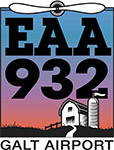Mathematics has never been my strongest subject so to plan my descent I like to use the method with the simplest calculations.
To avoid shock cooling the engine and terrifying my passengers, I usually plan a nice gentle descent from my cruising altitude that is timed to arrive at the appropriate traffic pattern altitude (TPA) roughly three miles from the airport. The only calculation I need to do for this procedure is to subtract my target altitude from my cruising altitude.
For example, if I am cruising at 5,500 feet MSL and TPA is 1,800 feet MSL, I will need to descend 3,700 feet. To make things really simple, I round this up or down to the nearest 500 feet, in this case 3,500 feet. You will see why in the next step.
I generally descend at 500 feet per minute using my vertical speed indicator (VSI), partly because that is a comfortable descent rate for the airplane and passengers, but more importantly because it makes the calculations easy! Next I divide the altitude needed to descend by the rate of descent to get the number of minutes it will take. In this case 3,500 feet divided by 500 fpm is 7 minutes.
To make sure I am at TPA well before I enter the downwind, I add on a few minutes. In this example I would probably start my descent about ten minutes before my estimated time of arrival.
If I have entered a flight plan in my GPS I can find the estimated time to my destination on my active flight plan page. I usually track my flight in ForeFlight as well so I will be able to see my “Time to Destination” (ETE Dest) at the bottom of my map page.
An alternative method is to determine how far from my destination I need to begin the descent. For this calculation I start with how much altitude I need to lose and then apply my desired rate of descent and my ground speed, which I will get from the GPS or ForeFlight. For simplicity I will use the same example as before. I want to lose 3,500 feet at a vertical speed of 500 fpm and my ground speed in this case will be 150 knots.
- The first step is to convert the ground speed to nautical miles per minute by dividing by 60: 150 / 60 = 2.5
- Next, divide the vertical speed by the nautical miles per minute to get a rate, in feet per NM: 500 / 2.5 = 200
- And finally divide the altitude to descend by the feet per NM to find the distance to descend: 3,500 / 200 = 17.5 NM
So I need 17.5 NM to descend 3,500 feet at 150 knots ground speed at a descent rate of 500 fpm. To make sure I am at TPA before I enter the traffic pattern, and to give myself time to slow down, I would usually add a few miles, so in this example I would probably round this up to 20 or 21 NM.
There are of course other considerations we all have to factor in to our descents, which complicate the process, but they still use the same calculations. For instance when we need to get below class bravo airspace or under a cloud layer to get to our destination.
I remember doing these calculations a lot when I was a new pilot, but believe it or not after gaining more flying experience you start to get a feel for when to start descending without doing the actual maths.
Beth Rehm, CFI

